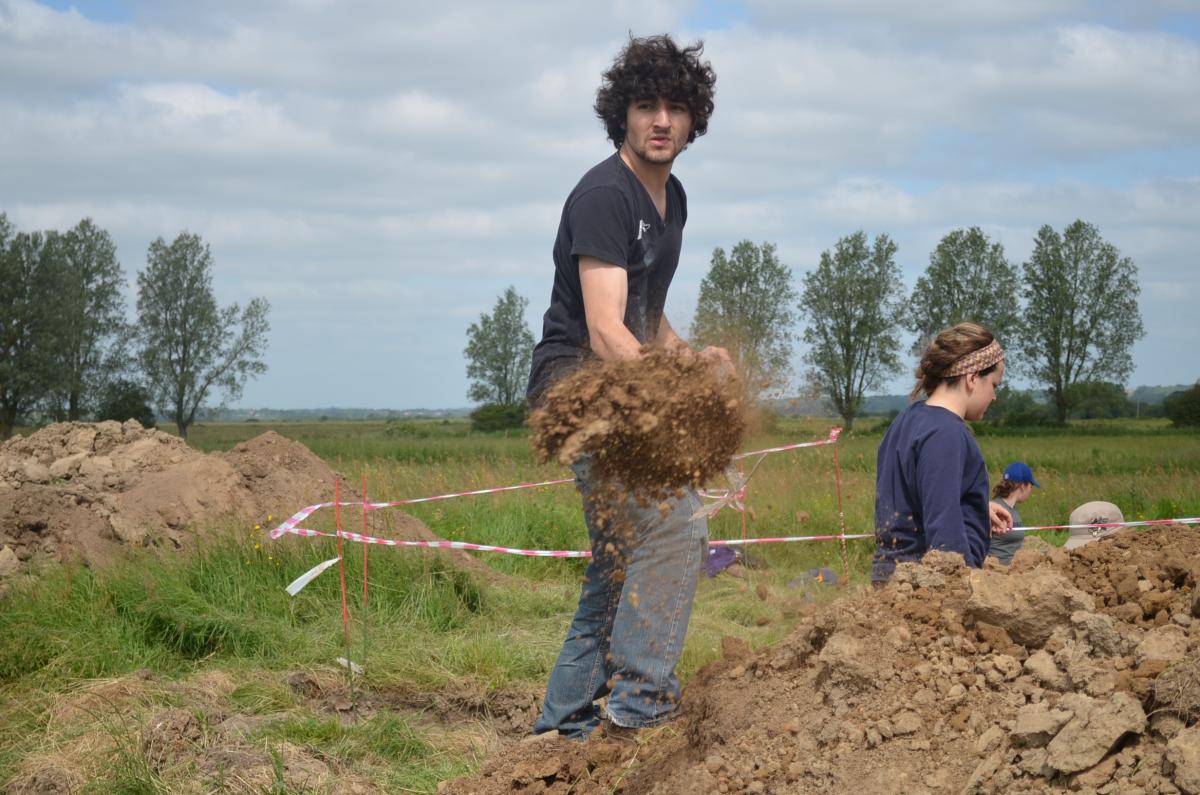Innovative research project at the BISC combines art and science
August 29, 2017
Share
Herstmonceux Castle is more than just a campus – it is a living piece of history. The campus, which Queen’s operates as the Bader International Study Centre (BISC), is a Bronze Age castle which has been continuously inhabited for over 600 years. This history provides a unique opportunity for Queen’s University and University of Waterloo researchers to study the way people lived hundreds of years ago – yet, up until a few years ago, the site had only received sporadic research attention.
The Herstmonceux Project is an archaeological effort which aims to increase our understanding of climate change by examining how changes in temperature and weather conditions have impacted the castle’s site since its founding.
“Since we received our initial Social Sciences and Humanities Research Council (SSHRC) grant, we have spent four years digging up the past and, along the way, this has provided excellent opportunities for students to work hands-on with a unique archaeological site,” says Steven Bednarski, University of Waterloo professor and medieval scholar. “There have been dozens of research trips to the site which have helped these students practice their research skills and will hopefully one day enable them to contribute to future climate change solutions.”
Queen’s has made a number of contributions to the project, including the assistance of two Queen’s Undergraduate Summer Student Research Fellowship recipients each year. This fellowship provides an opportunity for any continuing undergraduate students at Queen’s to develop their research skills under the guidance of a faculty researcher. Up to two of the fellowships offered each year take place at the BISC. This year, Abby Berry (Artsci’18) did ‘double duty’ while working for the Herstmonceux Project, says Dr. Bednarski. Part of Ms. Berry’s role this summer has been to digitize and catalogue the project’s archives – a task that aligned with her Queen’s education and personal interests.

“In my first two years at Queen's, I constantly found myself searching for intersections between my major in art history and my minor in mathematics,” says Ms. Berry. “It wasn't until my third year that I learned that there was a discipline called digital humanities that merges both science and art. I was interested in the Herstmonceux Project because it allowed me to explore both sides of my degree. There is an endless amount of research that can be performed when you ask yourself what computer programming can do for the arts and what the arts can do for computer programming.”
The opportunity to work on the research project has been a positive experience for Ms. Berry and she says, after graduation, she plans on continuing her research in the digital humanities.
“I'm really interested in how my computer programming background can be used to enhance our understanding of medieval art and architecture,” she adds. “I want to continue working on research projects that allow art to be accessible, not only to the top one percent, but to the general public – this can be achieved through 3D printing, high-resolution images, or computer models.”

In addition to the undergraduate student researchers, the Herstmonceux Project researchers are provided access to the campus grounds, they stay at the BISC during their visits, and the archaeological finds are physically stored and digitally catalogued at the castle. Queen’s graduate researchers, at the masters and doctoral levels, have also worked at Herstmonceux to oversee undergraduate students, and to conduct their own original research. Meanwhile, in Kingston, project collaborators in Queen’s Art History and Art Conservation department, including faculty member Amandina Anastassiades and now-retired faculty member Krysia Spirydowicz, worked with their own master's candidates to preserve and study the most fragile artifacts. These MA candidates produced reports and studies on the materials recovered at the castle, and several of them delivered a scholarly paper at an October 2016 conference in Waterloo.
The years of research work at the BISC recently led to a major award for Dr. Bednarski. He received a 2017 D2L Innovation in Teaching and Learning Award from the Society for Teaching and Learning in Higher Education, in part because of the Herstmonceux Project and for a digital research lab he has established at the University of Waterloo connected to the project. Dr. Bednarski credits the support of his research team and the project partners – including Queen’s University, the BISC, the University of Waterloo, and St. Jerome’s University (which is federated within University of Waterloo), and SSHRC – for the success of The Herstmonceux Project, and says he accepted the award on behalf of all involved.
To learn more about the project, visit www.medieval-environment.com.